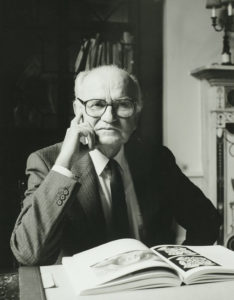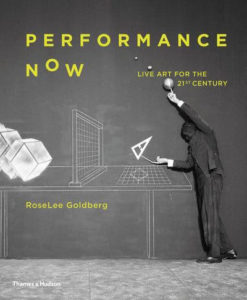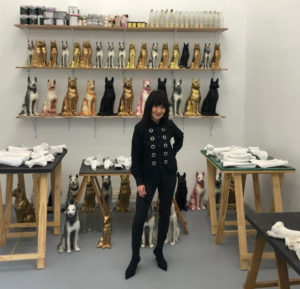Postcards from The Courtauld: Voices on Life, Art & Change
Like countless other nonprofits, The American Foundation for The Courtauld Institute of Art continues to re-imagine the way we stay connected to our special community, and to the wider art world. One constant, though, is our shared love of art and art history.
AFCIA is delighted to launch Postcards from The Courtauld: Voices on Life, Art & Change, a series of spirited and enlightening Q&As with a diverse group of alumni, friends, and special guests, who recount meaningful experiences and perceptions about The Courtauld, along with their current motivations and outlook.
|
Issue Ten As we continue to develop and emphasize online virtual connections, it becomes increasingly important to remember why technology is important to us. By telling our stories through art and culture we make interpersonal connections. By sharing our thoughts, ideas and emotions we build empathy, find compassion for other points of view and feel part of a community. But, there is no substitute for in-person interactions, especially performance. Shared experiences through dance, theater, music — capturing a moment we are experiencing, can give clarity to it, helping us to express who we are are and process what we are going through. Through Performa, which she founded in 2005, the celebrated and pioneering RoseLee Goldberg (MA 1970) has presented us with these types of live performance art experiences. Even during the pandemic, when the prospect of gathering seemed unthinkable, she knew that improvisation, innovation and creative solutions are fundamental needs and what Performa is about. In this latest issue of Postcards from The Courtauld, RoseLee tells us about her nascent love of art history and how her original and avant-garde ideas brought her to The Courtauld. Warm wishes for a happy New Year, Helen Lee-Warren |
RoseLee Goldberg
MA, 1970

What is your most striking memory of The Courtauld?
My most striking memory has to be my interview with Professor Zarnecki, former deputy director of The Courtauld, in his study overlooking the garden at the back of Portman Square. Up the double helix stairway, into this large, stunningly beautiful room, seated on a chair at his right, alongside a very large desk. It was the summer and I had recently arrived from South Africa. I had applied to The Courtauld earlier but was turned down with a kind recommendation that I spend one more year at the University of the Witwatersrand (Wits), where I had completed my BA in Fine Arts and Political Science.
I wrote back that an additional year in Johannesburg would bring me no closer to my intended area of research, Medieval Architecture, since no architecture of that kind existed in southern Africa. I was coming to London anyway, and could we meet?
In Professor Zarnecki’s office, I outlined my research plan: I wished to show that Romanesque and early Gothic architecture was influenced by Moorish architecture of north Africa and I outlined how I wished to proceed. Background note: the art historian with whom I had studied at Wits, Eric Fernie (who would later become director of The Courtauld), had provided a thrilling introduction to the architecture and politics of 1000-1200s Europe.

The interview continued for some time and eventually arrived at a point when Zarnecki said, “So, you will spend the summer improving your German?” to which I replied “If I am accepted at The Courtauld, absolutely.” I spent six weeks in Vienna and began at The Courtauld in the fall.
Was there a life-changing experience or moment that led to your writing the first history of performance art in the 20th century, Performance Art from Futurism to the Present (originally published in 1979) – and then four subsequent decades of writing, curating and teaching about the place of artists’ performance in the history of art?

Visiting a Bauhaus exhibition at the Royal Academy, including a large gallery exhibiting Oskar Schlemmer’s costumes, paintings and drawings related to the stage, would unquestionably be that moment. It could only be described as a visceral, full-on identification with Schlemmer’s work and ideas as both a painter and dancer.
He wrote extensively about the importance of both for him: “there are two souls in my breast”, he said. One theatrical, playful, Dionysian – the other visual, intellectual, Apollonian. He described “felt space” and the “stereometry of space”, as only a dancer could, and he built a curriculum around these concepts in drawing and sculpture at the Bauhaus and in the stage department which he directed. My dissertation at The Courtauld was Oskar Schlemmer and Performance at the Bauhaus.
What was your first professional position after graduating?
My first position out of school was as director of the Royal College of Art Gallery in London. I was surprised, as were many others at the time, to be offered the position, having had no administrative experience, nor much connection to the contemporary art world. But apparently my proposal to consider the gallery as a teaching tool for current art and ideas – and as a site for collaborations between the graduate departments at the RCA – tapped into a discussion that had been simmering amongst heads of departments for some time. The aim was to integrate, or at least overlap, the multi-disciplinary student body – graphic designers to design invitations, posters and catalogues, art history students to research, write and curate exhibitions, and interior design students to manage installations. That summer I took off for the Venice Biennale, Documenta, Los Angeles and New York, meeting artists, curators, critics, filmmakers, musicians, and choreographers, to get my bearing on the very latest in contemporary art – and I returned to London with a program that from the very beginning was multi-disciplinary.
So Performa, which you founded in 2005 in New York, continues that lineage?
Absolutely, I am still obsessed with showing the relationships between media – how visual artists throughout history have worked across disciplines, how they respond to the shifting sands of politics, the economy, technology. Performa has also been a way of bringing art history into the center of these conversations, “bringing art history to life,” to use an overused phrase. Every biennial has a “history anchor”, and we have devised exciting ways to show the relevance of critical markers along the way with inventive gala evenings based, for example, on Futurism or Russian Constructivism or Surrealism. I do everything I can to inform and inspire by illuminating art history. “Art history, art history, art history, you can never get enough of it” is something I repeatedly tell my students at NYU or the curators and producers at Performa, or anyone else for that matter.
“I am still obsessed with showing the relationships between media – how visual artists throughout history have worked across disciplines, how they respond to the shifting sands of politics, the economy, technology…”
What is one word that describes your current state of mind?
Excited, about all the work we must do to provide a highly visible platform for the extraordinary artists with whom we’re privileged to work, and, at the same time, feeling a great sense of responsibility to do so in the most innovative, inclusive and significant ways.

RoseLee Goldberg is an art historian, critic and curator, and the Founding Director and Chief Curator of Performa. Her numerous published works include Performance Art: From Futurism to the Present (Thames & Hudson, first published in 1979, latest update 2022) and Performance Now: Live Art for the Twenty-First Century (Thames & Hudson, 2018), key texts for teaching performance in universities. Throughout her career RoseLee has established new models for commissioning and exhibiting contemporary art and performance. She was Director of the Royal College of Art Gallery in London where she created a program of exhibitions that were tied into an inventive teaching syllabus, and she also taught at the Architectural Association in London. As curator at The Kitchen in New York, she presented works by Laurie Anderson, Phillip Glass, and Meredith Monk, and organized the first solo exhibitions of Cindy Sherman, Robert Longo, David Salle, Jack Goldstein and Sherrie Levine. Goldberg has curated performance series for the Museum of Modern Art, the Guggenheim Museum, and Garage Museum in Moscow, amongst others. In 2009, Goldberg was presented with the Chevalier of Arts and Letters by the French Government. Other significant honors include the Agnes Gund Curatorial Award in 2010 and the Yoko Ono Courage Award in 2016. In 2018 she was appointed Consultant on International Affairs by the Taiwanese Minister of Culture, until June 2021. Goldberg is an MA graduate of The Courtauld and has taught at NYU Steinhardt since 1987.
Previous Postcards:
Deborah Swallow — Märit Rausing Director of The Courtauld
Bill Griswold — Director of the Cleveland Museum of Art
Jason Farago — Art Critic, The New York Times
Joachim Pissarro — Art Historian, Theoretician, and Director of the Hunter College Galleries
Sara Turner — US Department of Justice
Mary Rozell — UBS Art Collection
Beth Greenacre — Curator and Art Consultant
Atticus Ross — Musician and Composer


